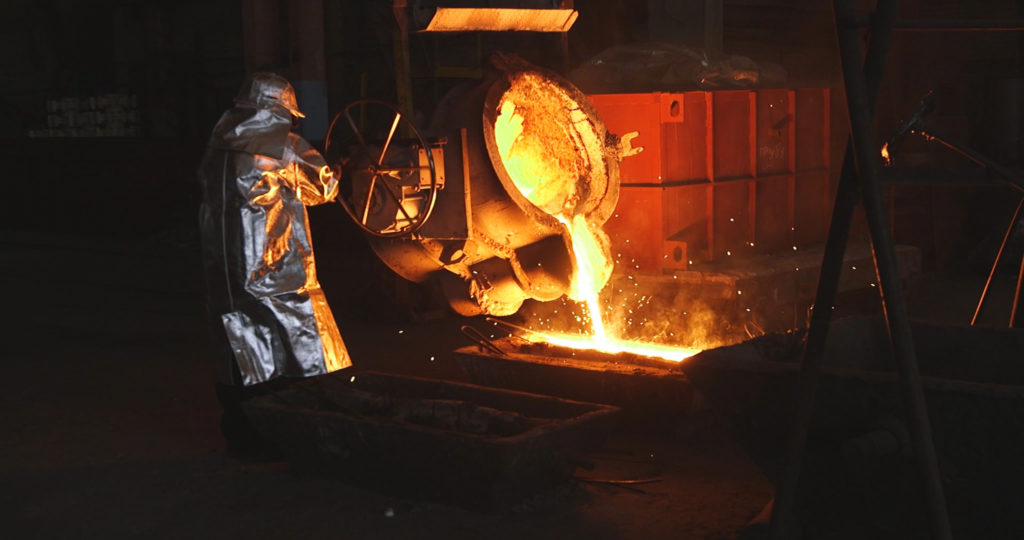The State of Steel: How the Industry Affects Every Sector in America, What You Should Know

The world of steel fabrication reaches into almost every industry and sector. When it comes to manufacturing and construction, steel fabrication is often the backbone of these operations. Since the onset of the pandemic and the slow return to some normalcy, many industries across the country have seen fluctuations in production and labor. So what’s going on with the steel industry and how might that affect your steel fabrication needs?
Here’s what you need to know.
Steel Fabrication Post-Pandemic and the Industry as a Whole
Like every other industry during coronavirus, the steel industry had to make considerable cuts—not to mention halt production in some cases. Some reports say that prices have skyrocketed due in part to slowed down production and also tariffs.
So after a year of production uncertainty and major rifts in manufacturing, the shortage of steel is causing some concerned eyebrow-raising across several sectors. Whether it’s the production of new air conditioning units, construction, or the automotive industry, the steel shortage has ripple effects that are now starting to pass on to the consumer.
The Market Analysis
According to Fortune magazine, since March of 2020 steel prices rose to 215%. A lot of steel plants shut down during the height of the pandemic with the projected fear that there was sure to be a depression or major recession in the market and therefore in demand. That projection, however, turned out to be misguided, as no one predicted the fact that Americans would rush to fix up their homes and that the demand for steel in residential and smaller construction projects would compound. The numbers suggest that prior to the pandemic, steel traded at about $500 to $800 and is now at about $1,825. That is a significant high.
The market shift happened in large part due to consumption patterns shifting and changing in unexpected ways. So while DIY projects begin to normalize, the larger industries like oil and gas refineries have surging steel demand.
Factors that Affect The Price of Steel
As a critical commodity across the globe, steel production is always in high demand. The prices fluctuate and reflect several major factors as they ebb and flow in the market. The main factors that influence the price of steel include:
- Access and cost to raw material: Steel production depends on iron ore and scrap metal. When these materials run low, there is a shortage. This will affect the production of new steel.
- Weather or natural disasters. Building new structures after disasters or other infrastructure can reflect in the prices.
- The price of oil. It’s no surprise that the price of oil affects a lot of areas of life. The shipping costs associated will mirror the international price of oil.
- Supply and demand in other sectors: Whatever happens in other industries might very well have an effect on the price of steel. Everything from demand in steel structures or household items that require a lot of steel. The fluctuations in international market supply and demand also affect the local price.
- Tariffs: Because steel is an international commodity these changes in trade policy will impact the overall price. Tariffs will have an effect not just on companies that use foreign steel but those that stick with 100% American steel as well.
Industries Affected by the Price of Steel
So as steel production and steel fabrication is affected, so are many other industries. This is the complicated nature of supply chains and the fact that steel is a critical component of much of the country’s infrastructure, equipment, and material goods.
Industries that suffer the price of steel include:
- Automotive industry: The manufacturing of new vehicles is always top priority for car companies. As the chip shortage that caused a slow down in 2020 is corrected, the demand for new steel in the automotive industry will surely skyrocket.
- Aircraft/aerospace: The aerospace industry is brimming. Aside from Space X sending its first civilian-manned spacecraft to orbit Earth, other private companies are exploring space with innovative technologies. This means more steel. The airline and aircraft industry is always repairing and building new aircraft, so that means more steel production there!
- Medical: The medical industry also uses high amounts of steel. Everything from sophisticated medical equipment to precise medical tools.
- Appliances: Everything from dishwashers to refrigerators to clothes dryers will require a certain amount of steel. When shortages occur, the production of these household items also goes down.
What to Expect Moving Forward
Markets are always changing and reacting. As of now, the Biden administration seems to have kept most of the past administration’s tariffs. However, experts seem to suggest that there is optimism about the steel production market as things begin to normalize.
Get Quality Steel Fabrication for Your Needs
Here, at Steel Specialties, we focus on helping the local El Paso construction industry erect quality and long-lasting buildings. We are a supplier of steel specialty products that assist in various important projects around the city.
If you’re looking for quality steel production and steel fabrication you can trust, call us today.

